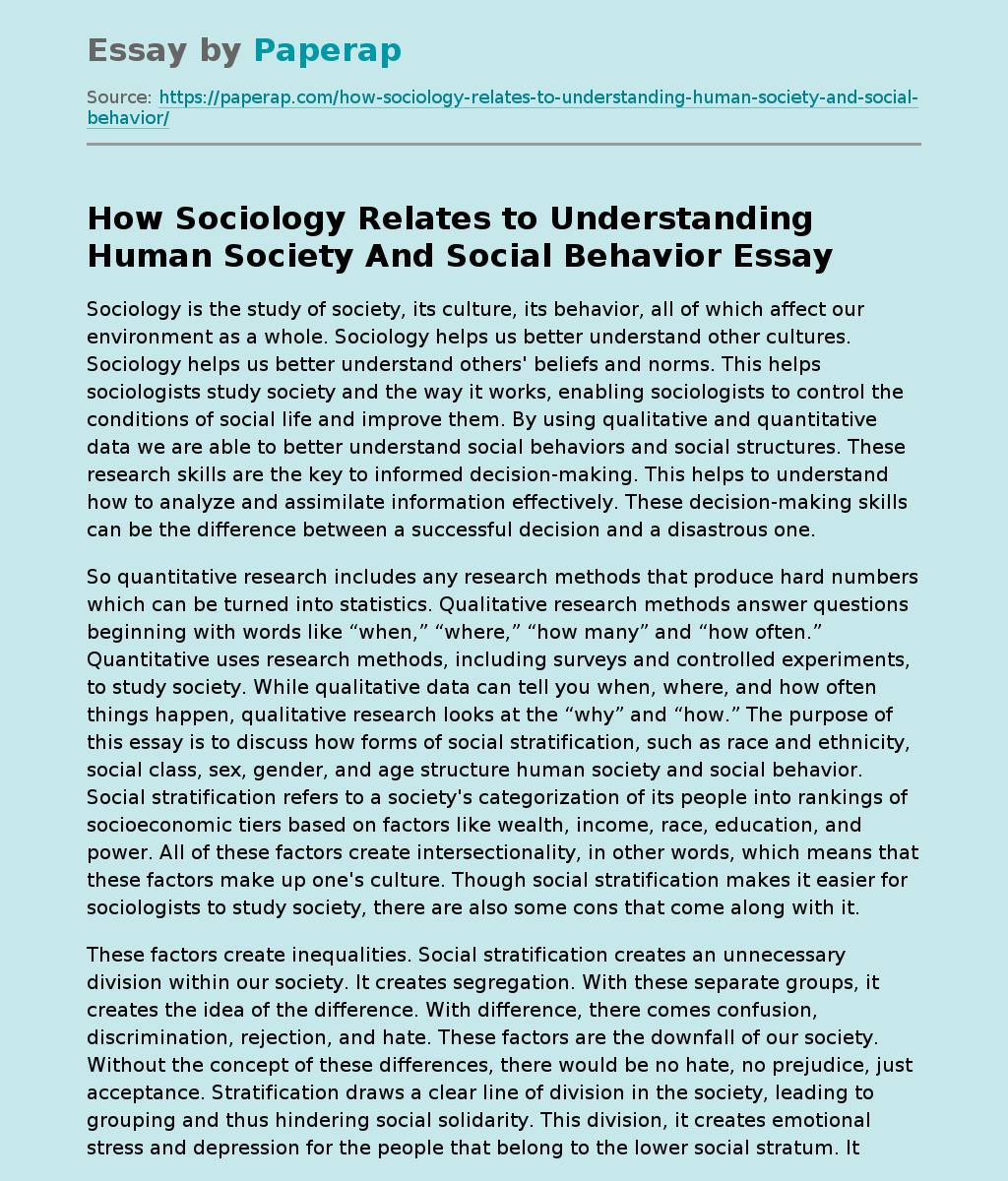How Sociology Relates to Understanding Human Society And Social Behavior
Sociology is the study of society, its culture, its behavior, all of which affect our environment as a whole. Sociology helps us better understand other cultures. Sociology helps us better understand others’ beliefs and norms. This helps sociologists study society and the way it works, enabling sociologists to control the conditions of social life and improve them. By using qualitative and quantitative data we are able to better understand social behaviors and social structures. These research skills are the key to informed decision-making.
This helps to understand how to analyze and assimilate information effectively. These decision-making skills can be the difference between a successful decision and a disastrous one.
So quantitative research includes any research methods that produce hard numbers which can be turned into statistics. Qualitative research methods answer questions beginning with words like “when,” “where,” “how many” and “how often.” Quantitative uses research methods, including surveys and controlled experiments, to study society. While qualitative data can tell you when, where, and how often things happen, qualitative research looks at the “why” and “how.
” The purpose of this essay is to discuss how forms of social stratification, such as race and ethnicity, social class, sex, gender, and age structure human society and social behavior. Social stratification refers to a society’s categorization of its people into rankings of socioeconomic tiers based on factors like wealth, income, race, education, and power. All of these factors create intersectionality, in other words, which means that these factors make up one’s culture. Though social stratification makes it easier for sociologists to study society, there are also some cons that come along with it.
These factors create inequalities. Social stratification creates an unnecessary division within our society. It creates segregation. With these separate groups, it creates the idea of the difference. With difference, there comes confusion, discrimination, rejection, and hate. These factors are the downfall of our society. Without the concept of these differences, there would be no hate, no prejudice, just acceptance. Stratification draws a clear line of division in the society, leading to grouping and thus hindering social solidarity. This division, it creates emotional stress and depression for the people that belong to the lower social stratum. It creates a gap between the rich and the poor, which is very difficult to eradicate. In conclusion, like every phenomenon, social stratification accommodates a good and bad viewpoint. But overall, stratifying our society creates some benefits that are beneficial and some that are devastating to our society. The purpose of this essay is to discuss examples of social change in the US over the last 200 years. In the last 200 years, America has slowly changed for the better.
The Thirteenth Amendment abolished slavery and involuntary servitude, except as a punishment for a crime. It was passed by the Senate in 1864, and by the House in 1865. The Fourteenth Amendment granted citizenship to ‘all persons born or naturalized in the United States which included former slaves who had just been freed after the Civil War. The Fourteenth Amendment was passed in 1868. The Fifteenth Amendment prohibits the federal government and each state from denying a citizen the right to vote based on that citizen’s race or color. It was passed in 1870. The Jim Crow Laws were started in 1877, which enforced racial segregation. The Jim Crow laws were finally abolished in 1964. The Nineteenth Amendment prohibits the federal government and each state from denying a citizen the right to vote based on their sex, this was passed in 1920. The most important changes were all made within fifty-six years. Although prejudice and discrimination still continue today. Women finally got the right to vote after protesting for nearly a hundred years of protesting. In 2015 same-sex marriage was legalized. Still today people are discriminated for their differences when they should be accepted for whom they are. Though the discrimination and hate have improved, it has taken hundreds of years to get where our nation is today. Concluding, our society today, in 2018, is still nowhere close to where it needs to be. There is still hate, racism, prejudice, and discrimination that we see every single day.
How Sociology Relates to Understanding Human Society And Social Behavior. (2021, Dec 11). Retrieved from https://paperap.com/how-sociology-relates-to-understanding-human-society-and-social-behavior/

